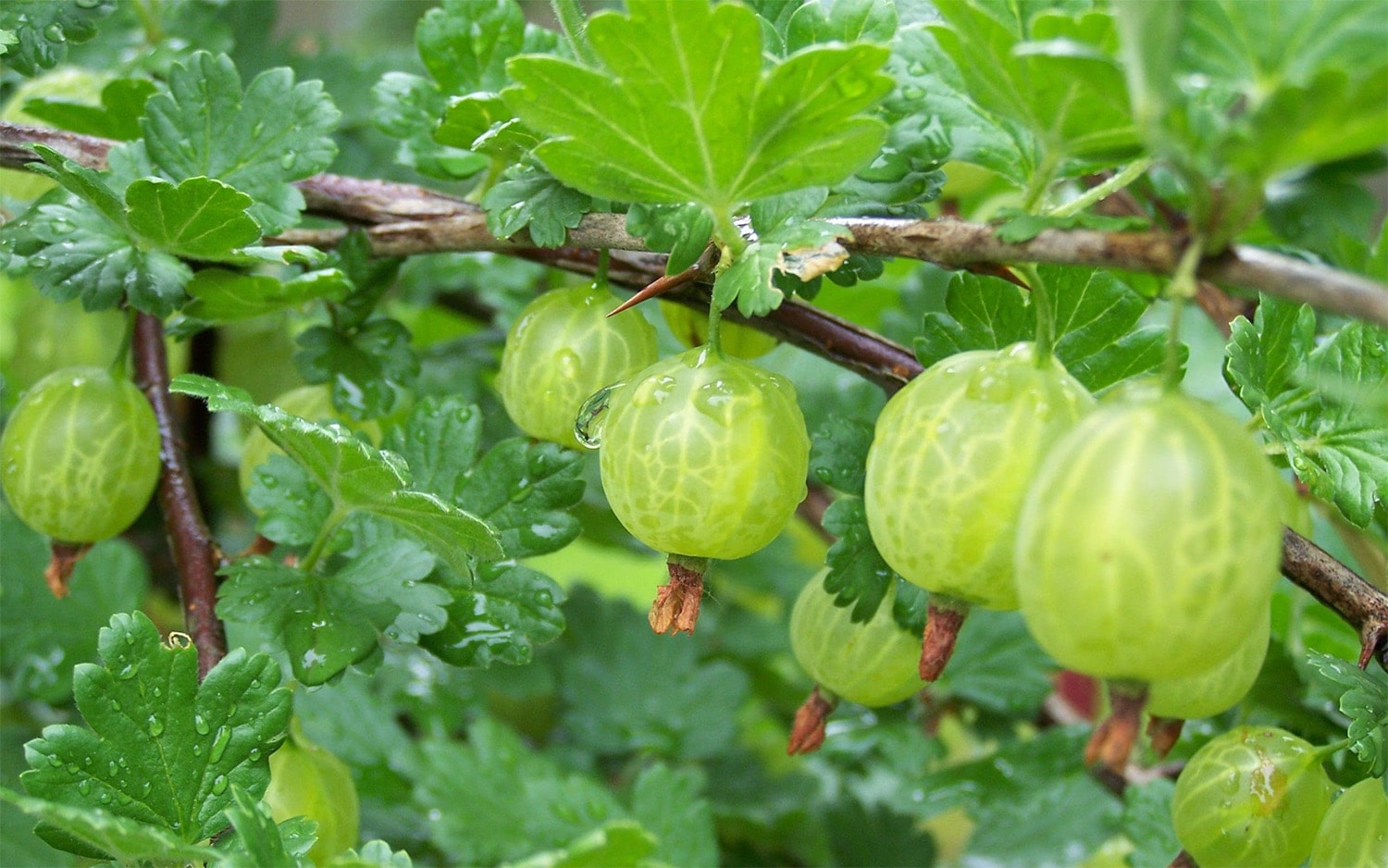
31 interesting facts about gooseberry
- 👁️ 285
The gooseberry, with its distinctive taste and appearance, holds a unique place in the world of fruits. Known scientifically as Ribes uva-crispa for the European varieties and Ribes hirtellum for the American, gooseberries are a summer favorite in many parts of the world, cherished for their tart flavor when underripe and their sweet, complex taste when fully ripe. Gooseberries vary in color, size, and taste, ranging from the small, tart green berries popular in British cuisine to the large, sweet, and almost translucent berries found in other regions. These fruits are not only delicious but also packed with nutrients and health benefits. Let’s explore some interesting and informative facts about gooseberries that may inspire you to include them in your diet or garden.
- Gooseberries belong to the same family as currants, Grossulariaceae.
- They are native to several regions, including Europe, the Caucasus, and North Africa.
- The name “gooseberry” is thought to have derived from the Dutch word “kruisbes” or the German “Krusbeere,” possibly relating to the crusader, or from the old French word “groseille.”
- Gooseberries can be green, white (yellowish), red, or purple when ripe, depending on the variety.
- The plants are deciduous shrubs, growing to about 1.5 meters in height and width.
- Gooseberries have thorns, making harvesting a careful task.
- They are rich in vitamin C, dietary fiber, and antioxidants, offering various health benefits.
- Traditionally, gooseberries were used in folk medicine to treat fever, inflammation, and digestive issues.
- In Britain, gooseberries are often used in desserts, such as pies, fools, and crumbles, or served with mackerel.
- The gooseberry season in the UK runs from June to August.
- Gooseberries require a cold period to produce fruit, making them unsuitable for very warm climates.
- The first recorded cultivation of gooseberries in Europe dates back to the 16th century.
- Gooseberry bushes are relatively easy to grow and can produce fruit for up to 20 years.
- In the 19th century, “gooseberry clubs” became popular in England, with members competing to grow the largest and tastiest berries.
- Gooseberries are related to blackcurrants; both were once banned in the United States because they served as a host for white pine blister rust.
- American gooseberries are generally smaller and more tolerant of warmer climates than European varieties.
- Gooseberry pie is a traditional dessert in parts of the United States, especially in the Midwest.
- The fruit can also be made into jams, preserves, and even wine.
- Some gooseberry varieties are known for their resistance to mildew and other diseases.
- Gooseberries contain pectin, making them excellent for jam and jelly making.
- In India, the gooseberry is called “amla,” and it’s considered a sacred tree in Hinduism, associated with the goddess Lakshmi.
- Amla is a key ingredient in Ayurvedic medicine, believed to enhance longevity and rejuvenate the body.
- The high vitamin C content in gooseberries helps in the absorption of iron, reducing the risk of anemia.
- Fresh gooseberries contain more than 80% water.
- In Russia, gooseberries are often used in making a type of kvass, a traditional fermented beverage.
- Gooseberry bushes prefer well-drained soil and can tolerate partial shade.
- The wood of gooseberry plants is quite tough and has been used to make small tools or mallets.
- Gooseberries naturally contain small amounts of hormone-like substances that can have a mild diuretic effect.
- The world record for the heaviest gooseberry was set in 2013 by a berry weighing 62.0 grams (2.19 oz).
- Gooseberries have a unique flavor that combines both sweetness and acidity, often described as similar to grapes but with a more complex profile.
- Some people believe that eating gooseberries regularly can promote healthy skin and hair due to their high antioxidant content.
Gooseberries are a fascinating fruit with a rich history, nutritional benefits, and a wide range of culinary uses. From traditional pies and jams to medicinal applications in Ayurveda, these small fruits pack a powerful punch. Whether you’re growing them in your garden or enjoying them in a summer dessert, gooseberries offer a delightful taste experience that’s both unique and refreshing. Their versatility and health benefits make them a fruit worth exploring in various culinary and medicinal contexts.
The gooseberry, with its distinctive taste and appearance, holds a unique place in the world of fruits. Known scientifically as Ribes uva-crispa for the European varieties and Ribes hirtellum for the American, gooseberries are a summer favorite in many parts of the world, cherished for their tart flavor when underripe…